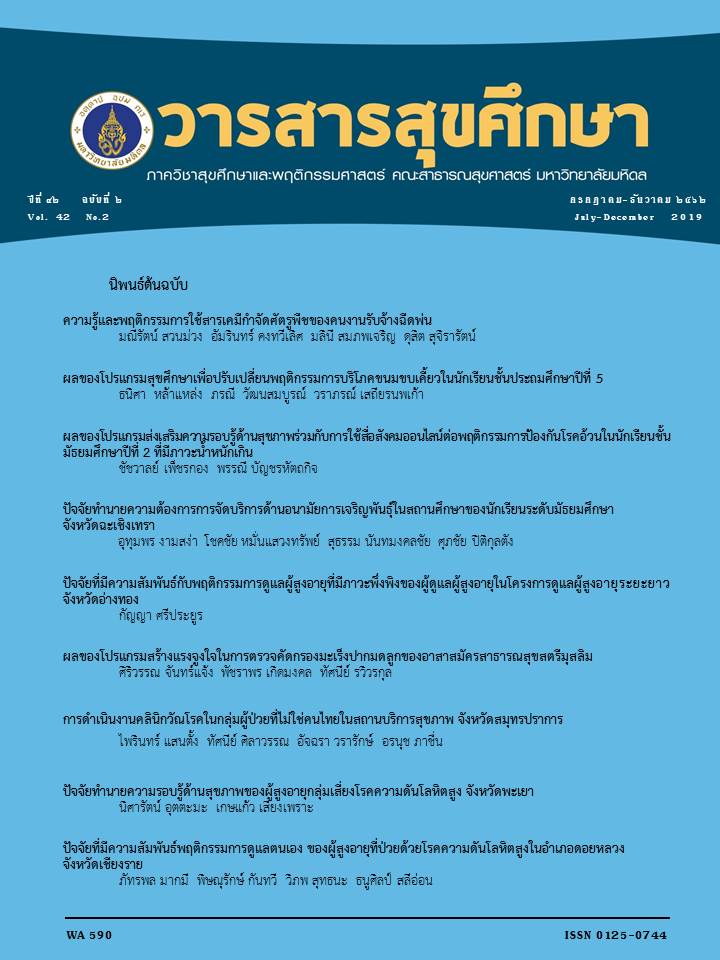An Investigation of Factors Relationship with Self-Care Behaviors in Elderly Patients with Hypertension in Doi-Louang District, Chiang-Rai Province
Main Article Content
Abstract
Hypertension in elderly patients has been the major health problem in both country level and community level. The objectives of this cross-sectional analytical study were to ascertain self-care behavior and to examine factors correlation to the self-care behavior in hypertension elderly patients with hypertension based on the Precede Proceed Model in Chiang-Rai Province, Thailand in January – September 2018. Data was collected from 757 by multi-stage sampling and questionnaires were developed based on a precede framework. Spearman Rank correlation statistic was used to examine the correlation.
The results showed that the mean age of 757 participants was 69 years, 57.6 % were female, 59.8% reported a family history of hypertension, 46.1 % had overweight or higher level, and 47.2% had comorbidity. Most of them had low to moderate level of perceived risk (69.3%), 40.8% had low-level social support and 70.5 % were high accessibility to medication. Predisposing, reinforcing, and enabling factors were positive relationship, especially between reinforcing and enabling were higher correlation (r = 0.266). Food nutrition and stretching exercise were positive correlation to predisposing, reinforcing, and enabling factors by statistically significant level at < 0.05. Current smoking had negative relationship with food nutrition (r=-0.102), medication(r=-0.078) and stress management behaviors(r=-0.159). Current dinking had positive relationship with current smoking(r=0.109), stretching(r=0.079), and movement of exercise(r=0.147), and had negative relationship with food nutrition behaviors (r = - 0.104). Age was highly associated with other factors. We recommend to create the new education or health promoting programs by concerning predisposing, enabling, and reinforcing factors, and personal factors such as age groups.

